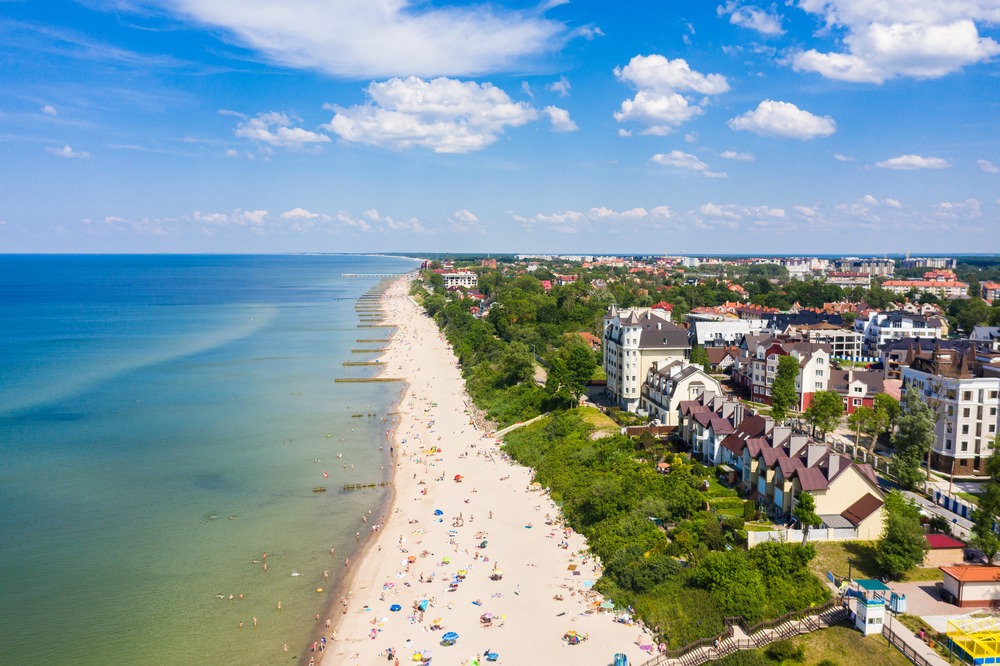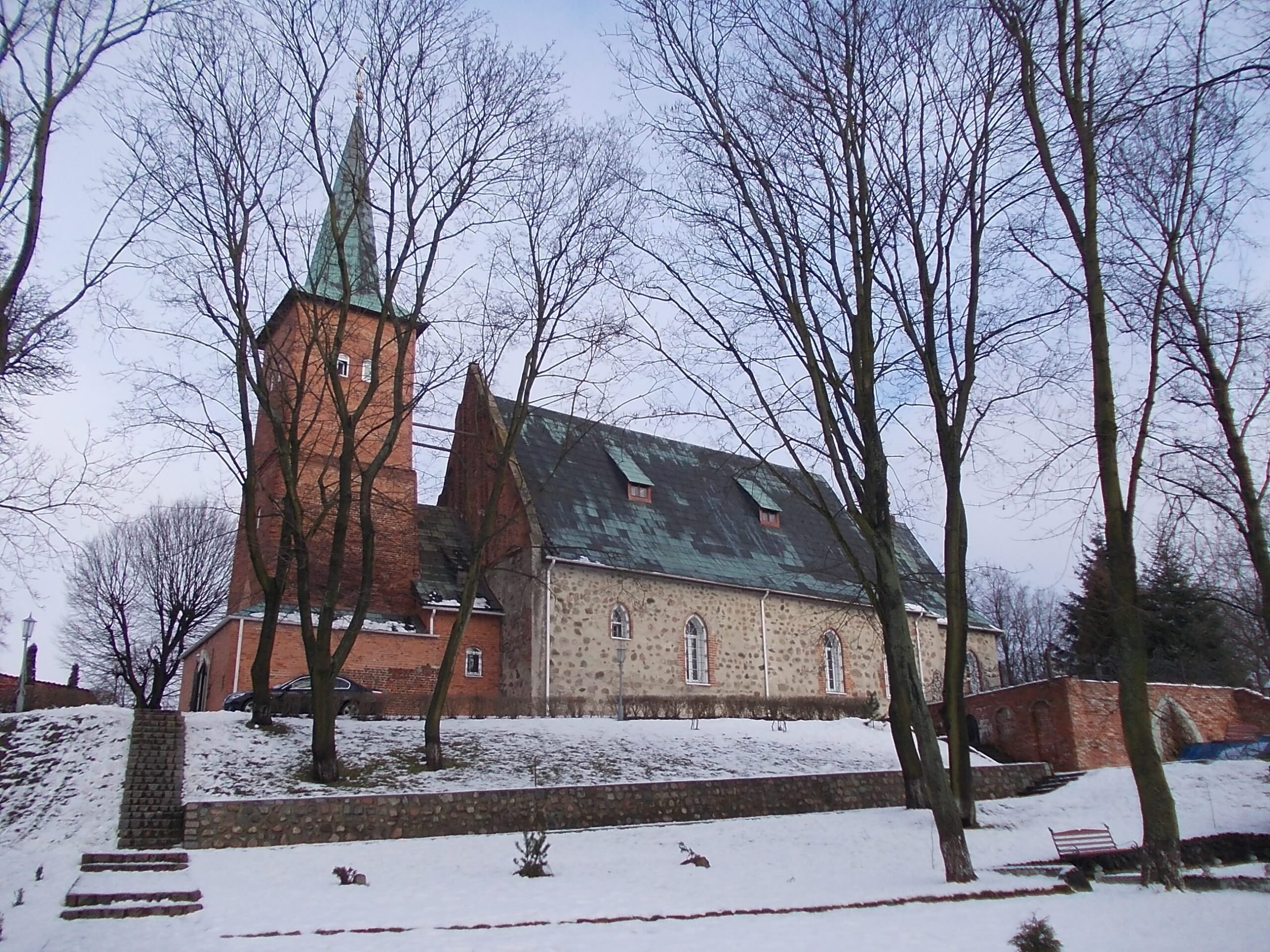Kaliningrad, Russia’s gateway to Europe, is a unique destination that stands out with its historical texture, architectural richness, and natural beauty along the Baltic Sea coast. Known as Königsberg during the German era, the city became part of the Soviet Union after World War II and received its current name. With its historical buildings reflecting German architecture and relics from the Soviet period, Kaliningrad offers a unique atmosphere where different cultures blend together.
Places to visit in Kaliningrad range from amber museums to Gothic cathedrals, from coastal towns to nature parks. The famous Königsberg Cathedral located on Kant Island attracts visitors with the grave of philosopher Immanuel Kant, while natural areas like the Curonian Spit are ideal for those seeking a peaceful escape. Offering history, culture, and nature all together, Kaliningrad is like a treasure waiting to be discovered on the Baltic coast.
1. Königsberg Cathedral

Königsberg Cathedral is one of the most important historical structures in the city of Kaliningrad and is considered a symbol of the city. Built in the 14th century in Gothic style, this structure was the center of religious, cultural, and academic life in the region known as the city of Königsberg during the German era. The cathedral is located on Kant Island (Kneiphof) over the Pregolya River and stands out with its impressive architecture. Its red brick facades, pointed arched windows, and tall towers are beautiful examples of classic Baltic Gothic style.
The cathedral is especially known worldwide for housing the tomb of the famous German philosopher Immanuel Kant. The grave, located just outside the cathedral, attracts visitors as a symbol of Kant’s connection to the city and his scientific legacy. Today, the building is used more as a cultural venue than an active place of worship; it contains a museum and a concert hall. The organ concerts held here, in particular, offer an impressive experience within the historical atmosphere. Königsberg Cathedral is a historical and cultural treasure that must be seen during a visit to Kaliningrad.
2. Kant Island (Kneiphof Island)

Kant Island is a historic island located on the Pregolya River, which runs through the center of Kaliningrad. Formerly known as Kneiphof, this island was once an independent town and an important settlement during the German era. The island’s most prominent structure is the Königsberg Cathedral, notable for its Gothic architecture. This area, dating back to the Middle Ages, has gradually become the cultural and historical heart of Kaliningrad. Heavily damaged during World War II and nearly forgotten during the Soviet period, the island was revitalized for tourism starting in the 1990s.
The island’s current name, “Kant Island,” was given in honor of the famous philosopher Immanuel Kant, whose tomb is located here. With its green spaces, walking paths, statues, and historical atmosphere, the island offers a peaceful resting spot for both locals and tourists. The park area around the cathedral and the river view are particularly appealing to photographers and history enthusiasts. Kant Island is a symbolic place in Kaliningrad where the past and present come together.
3. Kaliningrad Amber Museum (Yantar Museum)

Located within the old city walls of Königsberg, the Kaliningrad Amber Museum is housed in the 19th-century Dolgorukov Tower (built as part of the city’s defensive fortifications, also known as the Friedrichsburg Tower). The museum holds one of the world’s largest amber collections, with over 90,000 pieces on display, both in their natural form and as processed works created by ancient artisans. The collection offers a rich glimpse into the 50-million-year geological history of this fossil material, formed from the resin of coniferous trees in the Baltic region. On the ground floor gallery, raw amber specimens are exhibited by color and clarity; on the upper floors, jewelry, ornaments, and objects dating from the Roman, Byzantine, and Medieval periods are arranged chronologically.
The museum details not only the natural history of amber but also the region’s geological structure and amber’s role in historic trade routes. Visitors can learn about amber’s chemical composition through interactive panels and explore the material hands-on through experimental stands that demonstrate hardness and density tests. The museum also hosts craft demonstrations showcasing the fine workmanship of past artisans, along with exhibitions featuring contemporary artists working with amber. The balcony of the adjacent café offers a river view that is ideal for a relaxing break or photography. The Kaliningrad Amber Museum is a unique cultural center that captivates both science and art enthusiasts.
4. Kaliningrad Zoo

Kaliningrad Zoo is one of the oldest and largest zoos in Russia. It was established in 1896 in the then-German city of Königsberg under the name “Königsberger Tiergarten.” Founded by Hermann Claaß, the zoo initially opened with 893 animals representing 262 species. Over time, it expanded to cover an area of 16.5 hectares. Today, it is home to 2,264 animals from 315 different species.
The zoo suffered severe damage during World War II, with only four animals surviving: a deer, a donkey, a badger, and a hippopotamus. Rebuilt in the post-war period, it was modernized through sponsorship programs initiated in 1973. Today, it offers visitors not only a chance to see animals but also rare plants and historical structures. Notably, the former restaurant building constructed in 1911, now used as the administration building, stands out with its historical atmosphere.
Located in the city center and boasting a rich collection, Kaliningrad Zoo is a major attraction that draws the interest of both locals and tourists.
5. Fishing Village (Rybnaya Derevnya)

The Fishing Village (Rybnaya Derevnya) is one of the most popular and photogenic areas in Kaliningrad. Located on the banks of the Pregolya River, directly across from Kant Island, this area was built between 2006 and 2010 as an ethnographic and tourist complex reflecting the architecture of old Königsberg. Combining different architectural styles, the neighborhood features buildings in half-timbered (Fachwerk) style adorned with Baroque and classical details. Stretching approximately 500 meters between the Medovy (Honey) and Yubileyny (Anniversary) bridges, the area blends the city’s historical atmosphere with modern amenities.
One of the main attractions in the Fishing Village is the 31-meter-high Lighthouse Tower. From the top of the tower, you can enjoy a bird’s-eye view of Kant Island, the Pregolya River, and the Kaliningrad skyline. Inside the tower, there is also a small museum displaying everyday items and weapons from the 16th century. The area is filled with restaurants, cafés, souvenir shops, and art galleries. In particular, the riverside walkways offer a romantic atmosphere at sunset. The Fishing Village is an ideal stop in Kaliningrad for those looking to experience both a historical journey and a pleasant time.
6. B-413 Submarine Museum

























